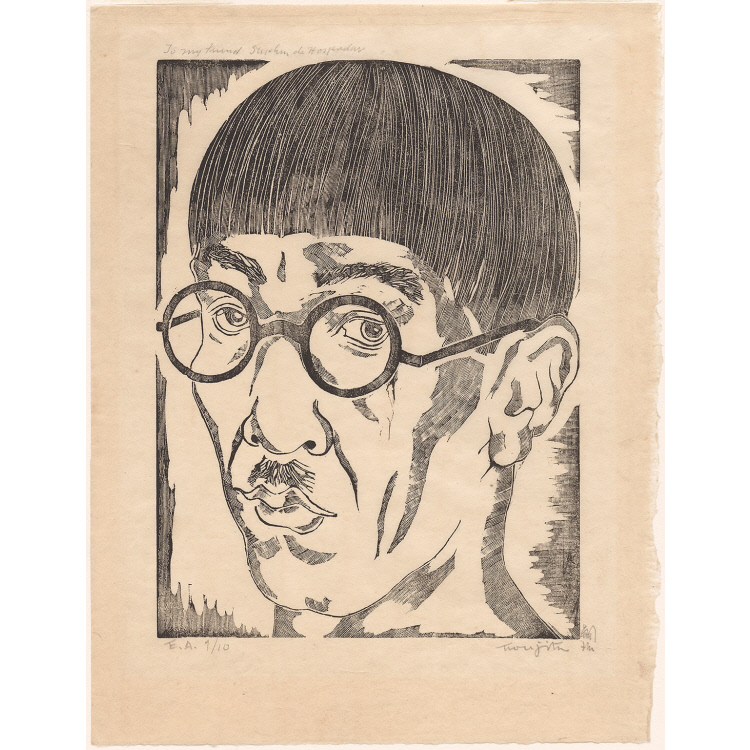Tsuguharu Foujita Self-Portrait

Usage Conditions Apply
Downloads
International media Interoperability Framework
IIIF provides researchers rich metadata and media viewing options for comparison of works across cultural heritage collections. Visit the IIIF page to learn more.
Usage Conditions Apply
There are restrictions for re-using this media. For more information, visit the Smithsonian's Terms of Use page. - Artist
- Tsuguharu Foujita, 1886 - 1968
- Sitter
- Tsuguharu Foujita, 1886 - 1968
- Date
- 1934
- Type
- Medium
- Wood engraving
- Dimensions
- Image: 22 × 15.8 cm (8 11/16 × 6 1/4")
- Sheet: 26.7 × 20.6 cm (10 1/2 × 8 1/8")
- Topic
- Costume\Dress Accessory\Eyeglasses
- Personal Attribute\Facial Hair\Mustache
- Self-portrait
- Tsuguharu Foujita: Male
- Tsuguharu Foujita: Visual Arts\Artist\Painter
- Portrait
- Credit Line
- National Portrait Gallery, Smithsonian Institution; the Ruth Bowman and Harry Kahn Twentieth-Century American Self-Portrait Collection
- Restrictions & Rights
- Usage conditions apply
- Copyright
- © Artists Rights Society (ARS), New York
- Object number
- S/NPG.2002.244
- Exhibition Label
- Tsuguharu Foujita was perhaps the most famous Japanese artist in Paris during the 1920s. Dramatic and bohemian, and a friend of the artist Amedeo Modigliani, Tsuguharu developed a hybrid painting style that incorporated figures with flat ivory white skin, dark sumi ink outlines, and subdued colors. Tsuguharu made self-portraits during this time as well, often to advertise his artistic reputation rather than to tell us about himself. In the early 1930s, when he had grown restless, he traveled to South America, Cuba, Mexico, and the United States. Upon returning to Japan in 1934, he created this self-portrait print, which is inscribed to the printmaker Stephen de Hospodar, whom he surely met in California. Caught between Japan and the West, Tsuguharu spent the war years supporting the Japanese cause, but after World War II, he left Japan and lived the rest of his life in France.
- Tsuguharu Foujita fue quizás el artista japonés más famoso del París de los años veinte. De carácter dramático y bohemio, y amigo del pintor Amedeo Modigliani, Tsuguharu desarrolló un estilo híbrido de pintura que incorporaba figuras planas de piel color marfil, contornos oscuros ejecutados con barra de tinta china y colores apagados. También hizo autorretratos durante esa época, a menudo con el fin de publicitar su talento artístico más que de hacer algún comentario sobre sí mismo. A principios de la década de 1930, cansado de estar en un mismo lugar, viajó a Sudamérica, Cuba, México y Estados Unidos. En 1934 regresó a Japón, donde creó este autorretrato dedicado al impresor Stephen de Hospodar, a quien seguramente conoció en California. Atrapado entre Japón y Occidente, Tsuguharu apoyó el lado japonés durante la Segunda Guerra Mundial, pero después de terminada la guerra abandonó Japón y vivió el resto de su vida en Francia.
- Data Source
- National Portrait Gallery
- Location
- Currently not on view